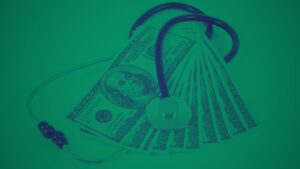Source: WFAE
The current school meal debt in North Carolina hit a record $3.1 million at the end of December last year, prompting calls from education advocates to push for permanent universal free school meals.
Earlier this month, a statewide advocacy coalition, called School Meals For All NC, urged lawmakers to invest in ensuring every public school student has access to breakfast and lunch at no cost to their families.
“We know that providing school meals to all students in public schools at no cost to their families will eliminate meal debt,” stated Morgan Wittman Gramann, a coalition member and Executive director of North Carolina Alliance for Health. “It will reduce hunger. It will improve academic performance and attendance. It will reduce shame and stigma. And we know that North Carolina is in a really good position to do this. We have the resources to do this.”
Following the success of the pandemic-era federal policy that expanded free school meals, state Democrats introduced bills in the House and Senate that would have established permanent universal free school meals, however, the bills have had little movement in the last legislative sessions.
“Children are being held back by hunger right now. And we know if they had access to no-cost meals in schools, they would be doing better in school. Their performance grades would get better, their behavior would get better, their attendance, their health, they’d be doing better,” stated Gramann.
Republicans refusing to extend the federal Universal School Meals Program last year impacted millions of students and their families. On top of the federal policy ending, enhanced food stamp benefits came to an end this month, costing families at least $95 extra per month they received during the pandemic, according to WFAE.
The News & Observer reports that children in a household of four with an income of $37,075 or less qualify for free lunch and those from a household of four with an income of $51,338 or less qualify for a reduced-price lunch.
Currently, sixty percent of North Carolina’s 1.5 million public school students qualify for free or reduced lunch. The rest either pay full price, are in debt, or don’t eat during lunchtime, according to The News & Observer.
“You hear people talk about a financial cliff, right? And I feel like we’re there,” stated Gramann.
“A hunger cliff. We are there. We are seeing families who are hard-working struggling just trying to make it through and just need a little bit of support right now, and (for) those children – that’s not their responsibility.”




